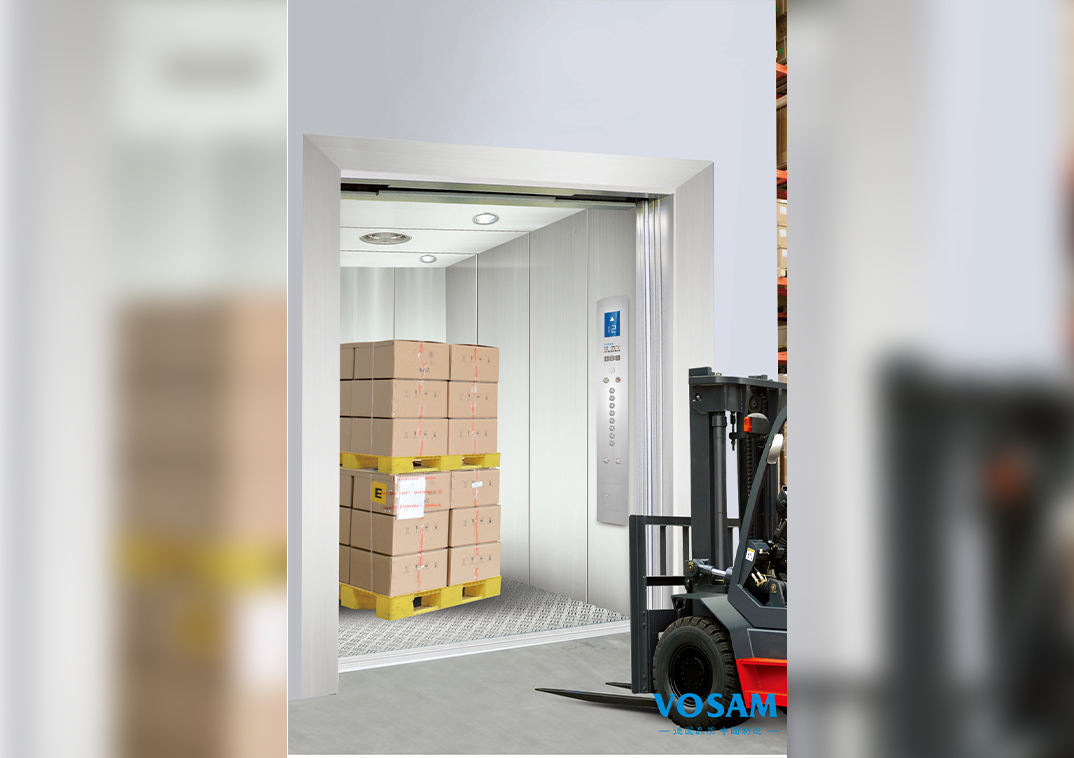Freight elevators play a critical role in the transportation of heavy goods within buildings such as warehouses, factories, shopping malls, and logistics centers. Because these elevators often carry substantial loads and operate frequently, ensuring their safety performance is of paramount importance. Unlike passenger elevators, freight elevators are built specifically to handle the stress of weight, size, and usage intensity. But how exactly is their safety guaranteed? Let’s explore the key systems, design features, regulations, and maintenance practices that work together to ensure the safety of freight elevators.
1. Robust Structural Design
Safety begins with strong, purpose-built construction. Freight elevators are engineered to support heavy weights—ranging from hundreds to several thousand kilograms. The design includes:
Reinforced steel platforms: Built to endure constant loading and unloading of cargo.
Heavy-duty hoist systems: Including chains, ropes, or hydraulic pistons, depending on the elevator type.
Impact-resistant walls and doors: To withstand contact from pallets, forklifts, or carts.
These structural components are calculated with safety margins well above the maximum rated load, ensuring the elevator remains secure even during unexpected conditions like overloading.
2. Advanced Safety Devices
Freight elevators are equipped with several safety mechanisms, many of which are similar to or even more robust than those found in passenger elevators:
a) Overload Detection Systems
Sensors detect if the cargo exceeds the rated capacity. If the load is too heavy, the elevator will not operate, preventing dangerous strain on the hoisting system.
b) Emergency Braking Systems
In case of rope or chain failure, automatic safety brakes (like the governor and safety gear) are triggered to stop the car safely within a short distance.
c) Door Interlocks
Freight elevator doors are equipped with interlock mechanisms that prevent the elevator from operating unless all doors are securely closed. This helps avoid accidents caused by partially open or misaligned doors.
d) Buffer Springs or Oil Buffers
Installed at the bottom of the shaft to absorb shock if the elevator descends too quickly or reaches the bottom unintentionally.
e) Manual Emergency Controls
Most systems include an emergency stop button, alarm systems, and in some cases, a manual lowering feature in case of power failure.
3. Strict Compliance with Safety Standards
Freight elevators are subject to international and national safety codes, which govern their design, installation, operation, and maintenance. Common standards include:
ASME A17.1 / CSA B44 (North America)
EN 81-31 (Europe – for goods only lifts)
ISO 4190-2 (International standard for service lifts)
Local building codes and industrial regulations
These standards set minimum safety requirements, such as:
Load capacity limits
Speed restrictions
Fire resistance of materials
Shaft ventilation
Access control for operators
Compliance is typically verified during certification and inspection by government or third-party safety authorities.
4. Regular Maintenance and Inspections
Routine inspection and preventive maintenance are critical to ensuring long-term safety. Freight elevators, due to their heavy-duty usage, are often inspected more frequently than passenger elevators.
Maintenance includes:
Checking cables and chains for wear or fraying
Lubricating moving parts such as guide rails and door tracks
Inspecting brakes, motors, and control panels
Testing emergency systems like alarms and manual overrides
Many jurisdictions require annual inspections by certified elevator technicians and may mandate reporting of maintenance logs. Early detection of mechanical issues helps prevent breakdowns and reduces safety risks.
5. Operator Training and Access Control
While passenger elevators are used by the general public, freight elevators are typically operated by trained personnel. Proper usage significantly enhances safety:
Training ensures operators understand load limits, loading/unloading procedures, and emergency responses.
Signage and load charts are often displayed inside the elevator to remind users of maximum capacity and safety instructions.
Access controls such as key switches, RFID cards, or PIN pads restrict use to authorized staff only, preventing misuse or tampering.
Some elevators include voice prompts or digital displays to provide real-time instructions or warnings, which also helps ensure proper use.
6. Fire and Seismic Safety Features
In buildings where fire or seismic activity is a concern, freight elevators may include:
Fire-rated doors and materials to prevent the spread of flames and smoke.
Seismic sensors and reinforced anchoring systems to help elevators stay intact during earthquakes.
Emergency communication systems to alert building staff or emergency services in case of entrapment.
In fire-prone environments, elevators may be programmed to return to a designated floor and remain there during emergencies, avoiding use during hazardous conditions.
7. Modern Smart Monitoring Systems
With advances in technology, many freight elevators now include IoT-based monitoring systems that provide:
Real-time data on usage, wear, and performance
Alerts for abnormal behavior or potential malfunctions
Predictive maintenance scheduling
Remote diagnostics and control for maintenance teams
These systems reduce the likelihood of unexpected failures and enhance safety through proactive management.
The safety performance of freight elevators is guaranteed through a combination of engineering, technology, regulation, and human responsibility. From reinforced construction and fail-safe devices to regular inspections and smart monitoring, every aspect is designed with safety as a top priority.
In high-use commercial and industrial environments, where heavy goods are moved daily, the risks can be substantial if proper systems are not in place. Fortunately, with strict standards and advanced technologies, modern freight elevators are safer than ever before.
Ultimately, the key to maintaining this safety lies in ongoing vigilance—regular maintenance, operator awareness, and adherence to safety codes ensure that these powerful machines continue to operate reliably and safely for years to come.












